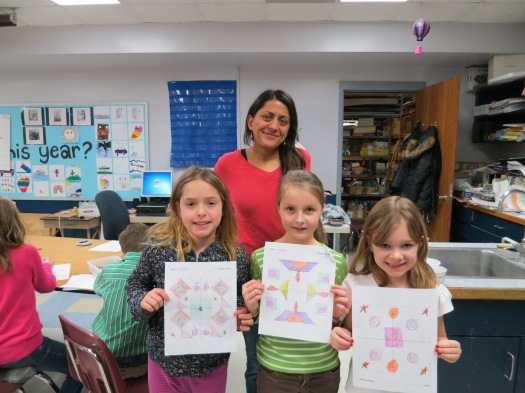Target 4: Engaged Community Partners. Students will collaborate, innovate, create and conceptualize ideas and learning with global partners to make a difference in their community, state, and world.
Action Step: Students Engaged with community partners in a focused collaborative inquiry process.
Indicator of Success – Collaborative student projects/partnerships become part of the fabric of the broader community.
Georgia Elementary School and art teacher Dorsey Hogg welcomed artist Gowri Savoor for a 4 day residency. She taught us about the ephemeral art of rangoli from India. Large circular designs are created in colored sand or chalk outside of homes to celebrate a variety of festivals and celebrations. The art is temporary and washes or blows away over time. The creative expression is through the bright colors and process of laying out the shapes and sharing with friends and family.
She worked with 2nd through 4th graders to create large rangoli designs. The 2nd graders dyed rice and glued the rice onto tiles to create a permanent group rangoli that will be completed soon and displayed at the Vermont State House for Youth Art Month in March. The 3rd and 4th graders worked together to create 3 temporary rangolis that were each swept away for the rice to be reused or composted. The students experienced working together in a mindful and respectful way to lay down the loose rice. They learned that the beauty and significance of art doesn’t always have to be permanent.
Gowri’s personal art focuses on geometry and the environment. She shared with the Georgia students her own work with natural materials and shapes in nature. She taught the students about focus and being mindful through making art.





what a cool thing to use dyed rice! very fun!
LikeLike
What a Beautiful art form and cooperative project!
LikeLike
Great art and cultural emersion. Was this a Vermont Arts Council Residency?
LikeLike